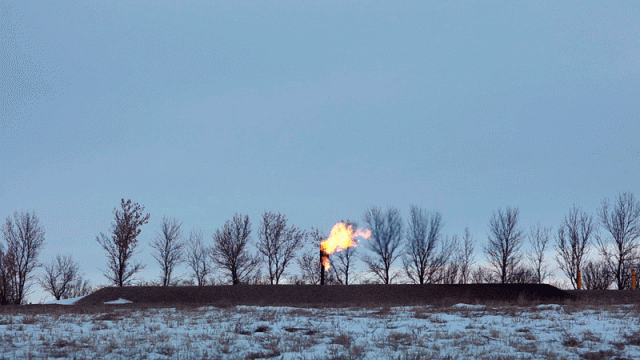North Dakota Regulators Push Back Intermediate Flaring Goal, Make Final Goal Tougher

The oil and gas industry in North Dakota has asked state regulators to adjust some of their previously set goals to reduce flaring. Their argument is that forces beyond their control, including delays in building pipeline infrastructure and falling oil prices, have hurt their ability to capture gas.
Though, it should be remembered, they’ve done a pretty fantastic job of lowering the volume of gas flared even as the amount of gas produced has skyrocketed:
By building out gas capture infrastructure faster than booming gas production, the industry has actually cut the flaring rate in half in the last year.
The oil and gas indusry asked the North Dakota Industrial Commission – a regulator triumvirate made up of the governor, the attorney general, and the agriculture commissioner – to make some adjustments. Not surprisingly this caused some consternation on the political left. The environmentalists thought it would be better if the industry just, you know, stopped pumping oil (because that’s a productive suggestion), and Democrats in the state saw this as an opportunity to attack Attorney General Wayne Stenehjem who may be running for governor next year.
I haven’t understood the controversy, especially now that we get a look at the adjustments the NDIC approved today. Per Mike Nowatzki, “The commission voted to delay the 85 percent goal by 10 months to Nov. 1, 2016, while also setting a midpoint goal of 88 percent by November 2018 and bumping the final goal up to 91 percent and possibly as high as 93 percent by November 2020.”
In other words, the state’s flaring goal hasn’t really changed all that much. The original goal was to gas capture up to 90 percent by October of 2020. The new goal is to get gas capture up to 91 percent by November of 2020.
So a higher bar for gas capture which comes just one month later. What’s changing is some of the intermediate goals, which have been pushed back a bit to let the industry get caught up on infrastructure.
What’s so bad about that?






